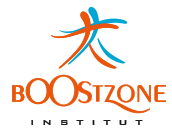As I mentioned in an earlier blog on the Future Features of Social Media, there is a lot of difficulties for community tools designers to “invent” new usages (although they can invent new features) and there is a lot of difficulties for the users to find out which usages they will need tomorrow. This conundrum is particularly true with social media within corporations. It is harder for a corporation to put itself on a wait and see basis, to see how employees will use a tool, than for the Internet community at large (where the evolutions of, say, a Twitter is always fascinating, interesting and risk free for the observers).
The Boostzone Institute organized a workshop on the topic, gathering tool designers and large corporate users, from HR executives to community managers to organization change specialists.
The group arrived at a number of interesting questions and at identifying a number of fields for attention. This post summarizes some of the highlights of the workshop’s discussion and opens discussion for comments.
THE UNDERLYING CORPORATE ORGANIZATION’S SUPPORT FOR A STRUCTURED COLLABORATIVE ENVIRONMENT IS THE FUNDAMENTAL BASE FOR A SOUND CORPORATE COLLABORATIVE PROGRESS
The underlying organization of any collaboration effort is critical for the new usages to become part of the internal culture. Walfa Chouki of Alstom University in her introduction mentioned the constant balance required between technology management, people development and practical community management. For more info on Alstom see their video. One interesting point is that even if the “Center” of the collaborative organization does not “own” the tools or even the collaborative process, since many Business Units prefer to try it alone, the fact that a sort of “base camp” does exist facilitates the progressive development of a new culture. The risk however to see new silos (i.e. new closed communities within the organization) is not negligible.
THE NEW RULES OF CONDUCT ARE NOT YET THERE
As for email, that most individuals still don’t know how to properly use after twenty to thirty years of usage, social media, even internally, are not yet mastered properly by the users. The proliferation of means to distribute knowledge and information actually blurs even further the emerging usages clarity. The most important issues are around the notion of pull/push for information and around the notion of filtering information. The “Infobesity” is a constraint for all players and the quantity of un-useful or unimportant information creates too much noise in every one’s work ecosystem. Tools will be useful but most important will be the emergence of new usages.
Furthermore the arrival of Netgeners (or whatever the name you give to digital natives or social networks native) is not really helping since the rules of conduct within closed corporate networks are very different from those for the outside social networks and many young co-workers are actually lost, when asked to use the collaborative tools within corporations, rather than becoming drivers of change.
The interactions between internal networks and external networks are increasing but here again the rules, even for some crucial things like confidentiality, are far from being understood by employees.
GOVERNANCE(S) OF SOCIAL MEDIA BASED ORGANIZATIONS
The discussion about governance is one of the most important in this field of social innovation. The workshop outlined the necessity for progressing on that front and outlined three types of governance that need a deeper approach:
– The one by the organization (at corporate level or at Business Unit level or even at community level) on the employees’ behavior on social media; it includes the legal governance for instance of work contract and IP protection;
– The one by individuals on what they want to receive or not and on how they want to use the various tools;
– The “de facto” governance imposed by a tool when this tool forces a number of behaviors or processes (number of clicks, nature of publications, visibility of activity, etc.) This third governance seems to be often creating anxieties and discomfort for users.
THE ROI IS NOT AN ROI
The debate on ROI is happening anywhere. It becomes acute at the tool and usage level. Everyone knows now that the cost of tool is more or less negligible but that the cost of collaborative time can be staggering. The discussion went a step further by proposing to separate various ROI: the ROI for an organization in general, the ROI for a given business unit, the ROI for an individual. It proposed as well to include a Risk of non-investing in collaboration.
One of the interesting issues to pursue is the notion that an organization by Business Unit (BU), by separating too clearly the P&Ls, actually reduces the potential for cross unit collaborations by individuals. If a BU is more on the contribution side than on the retribution side, the risk for this BU to stop contributing is extremely high since the return on collaborative time investment would be more visible in the receiving BU..
THE NEW SYMBIOSIS OF USAGES / TECHNOLOGY
Usages and technologies are in symbiosis. Each one acts on the other on a non-linear way. Among the issues to watch with the emergence of new technologies because they will have an important impact on internal collaboration usages:
-The personal platform — (like the one on the IPhone), combined with mashup possibilities and with new technologies like Augmented Realities, — create a universe where an incredible level of mobility is possible but where individuals are partially lost and sometimes scared.
-The arrival of semantic web based applications
-The arrival of powerful localization tools
CHALLENGES ON THE HORIZON
As issues coming soon on the radar screen the group noted as important:
-The improving communities’ technical monitoring tools, linked to the evaluation of individuals, allowing the emergence of metrics on networks and collaboration, are scaring many individuals
-Training programs that should integrate as soon as possible training for collaboration skills for employees and for managers
-The collaboration “evangelists” ; they might in some case prove counter productive since they tend to constantly propose new tools and lose the attention of middle and top management. Organizations need some stability of the tools used, and a slightly outdated tool is more effective if accepted than a new and technologically better tool that scares or at least distracts users.
-On the contrary the newbies, if one organization can attract them properly into communities, become soon very good viral evangelists. The issue then is on how to motivate more newbies to join communities and make them more engaged.
NEXT STEPS
The group agreed on a number of next steps:
-Implications of the collaboration tools (Social Network Metrics in particular but not only) on job definition, evaluation process, compensation frameworks, skill development process
-More work on ROI various dimensions
-A new workshop on the notion of governance of communities
-Analysis of the organizational and engagement risks related to the changes in evaluation systems and in privacy protection
-Analysis of the issues related to the interactions between internal and external communities
-A similar session in 6 months
-The immediate creation of a working group on the subject. It will first be open to the members of the Boostzone Institute who were participants to the September 18th workshop.
Dominique Turcq
Sept 28th 2009


